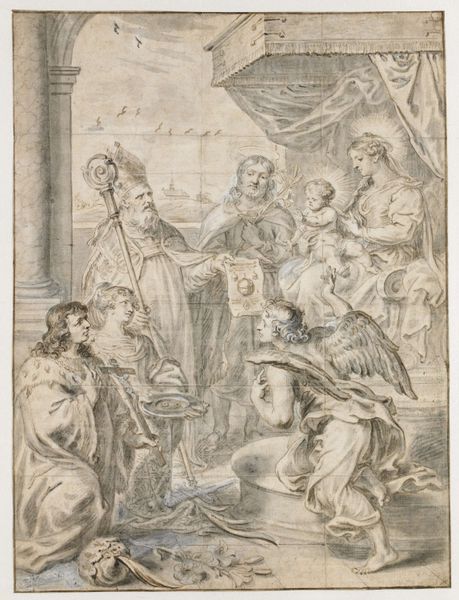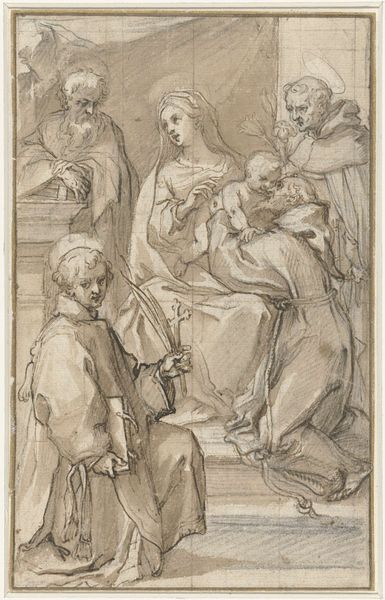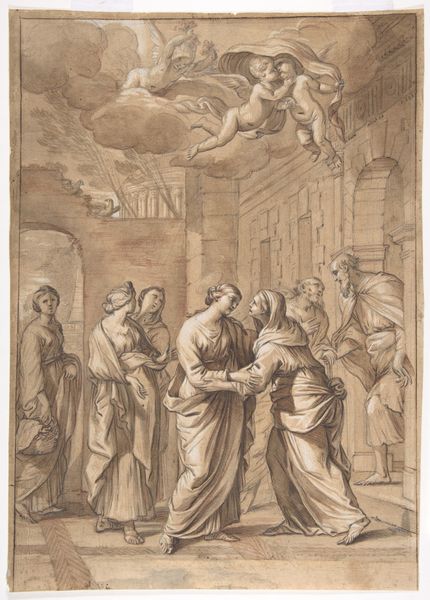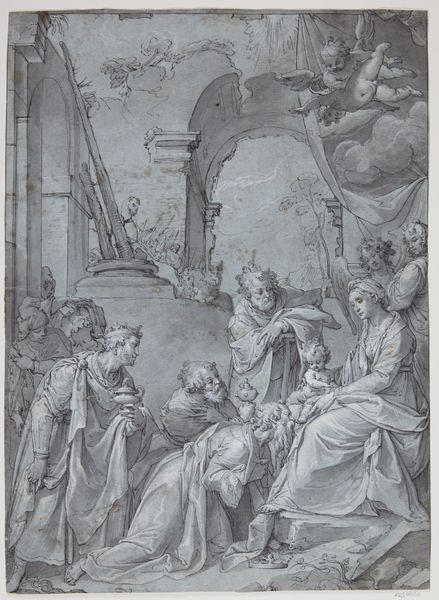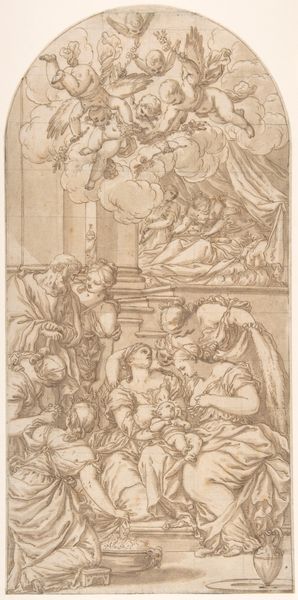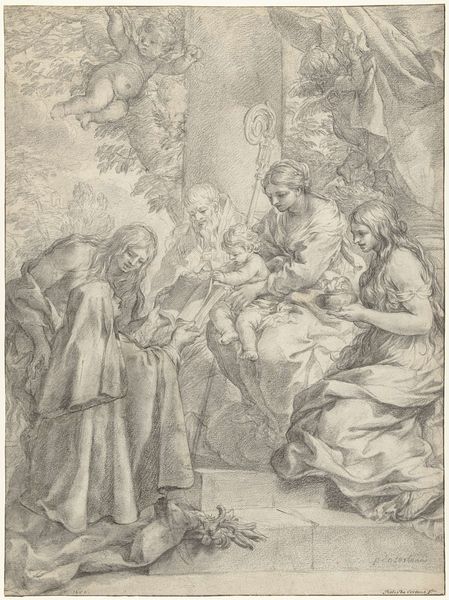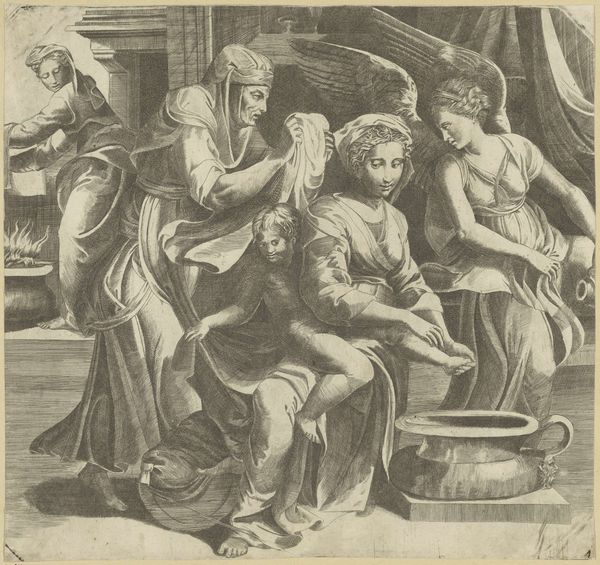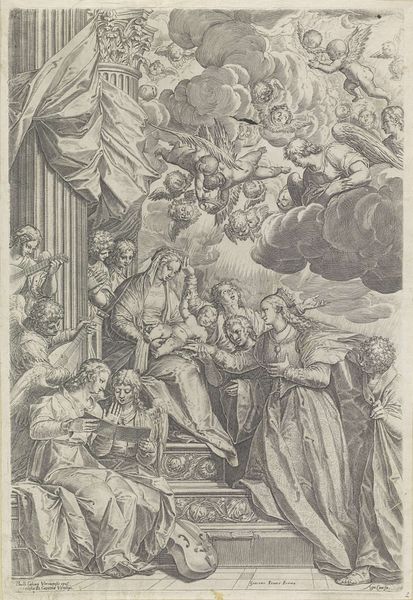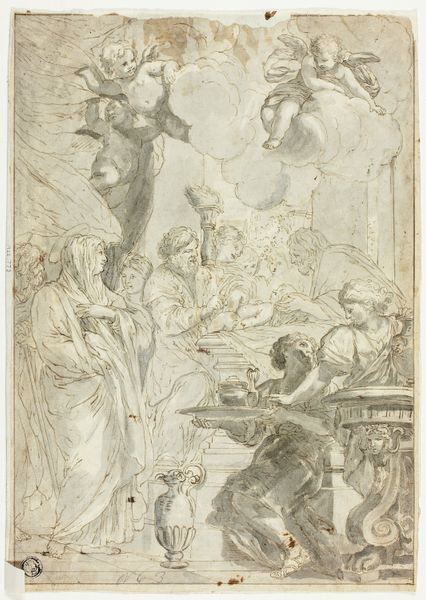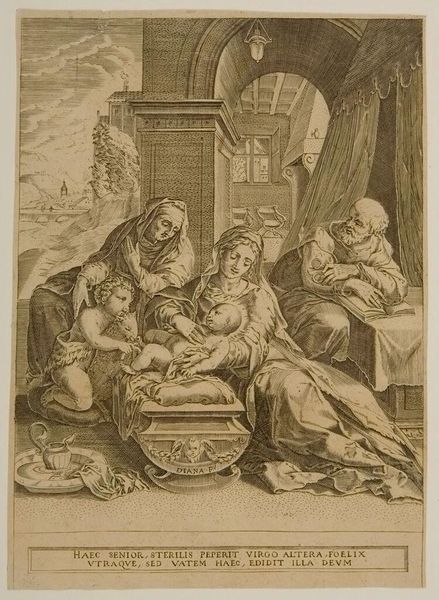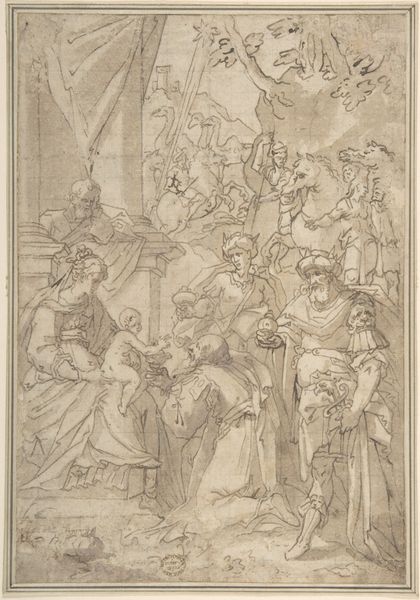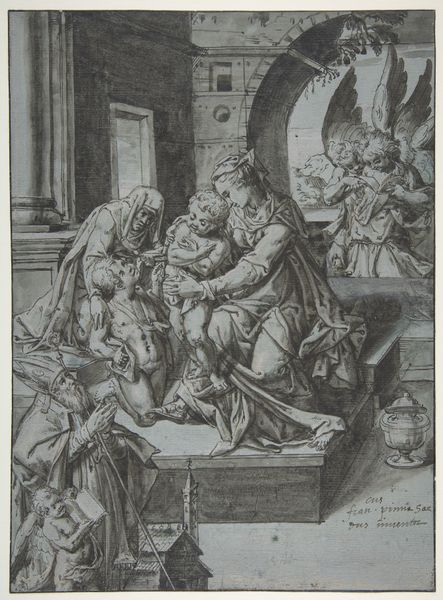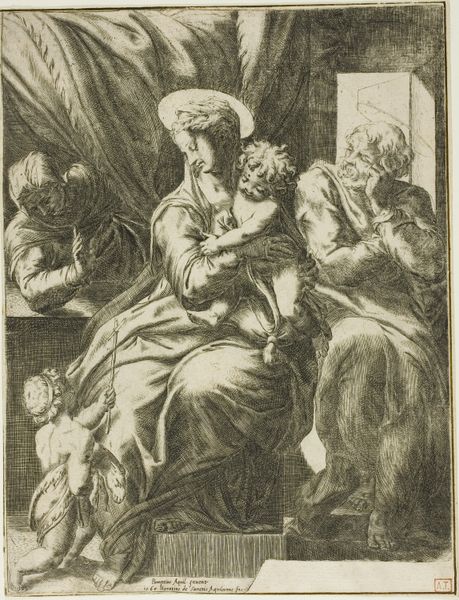
drawing, paper, ink, charcoal
#
portrait
#
drawing
#
narrative-art
#
charcoal drawing
#
figuration
#
paper
#
11_renaissance
#
ink
#
pencil drawing
#
classicism
#
watercolour illustration
#
charcoal
#
history-painting
#
academic-art
#
italian-renaissance
#
watercolor
Dimensions: height 312 mm, width 212 mm
Copyright: Rijks Museum: Open Domain
Curator: This sepia-toned drawing is "The Holy Family with Saint John the Baptist," and it is believed to be by Vespasiano Strada. Its creation date is estimated between 1592 and 1622. Editor: It feels very...theatrical, doesn't it? All those figures arranged almost like a stage tableau, bathed in a soft, ethereal light. You can almost hear the hushed whispers and the rustle of robes. Curator: Indeed. Strada’s piece provides a glimpse into the intersection of religious devotion, familial structures, and early modern European art. Examining this through a lens that considers gender and power dynamics within the family offers insight. Consider the centrality of Mary, both physically and emotionally. Editor: Yes! She seems to be both anchoring the whole composition and exuding this incredibly serene power. She's totally self-possessed. Even John, that sweet, chubby little John... is bringing so much chaotic puppy energy to this perfect Madonna-and-Child moment! Curator: It’s true. John and the lamb introduce an element of the pastoral but also one of sacrifice and foreshadowing—the lamb is symbolic of Christ’s ultimate fate. Considering artistic conventions, we see elements that reinforce existing power structures. Joseph, for example, takes a more passive role compared to Mary's central position. Editor: I was immediately struck by the light. The artist created such an interesting and soft atmosphere, and that's only heightened by these really defined shadows. There's almost this warm haze in places. Is that the watercolor? Curator: The drawing employs watercolor, ink, and charcoal on paper, building layers of shadow and highlighting to achieve a sense of depth. This reflects the techniques of the Italian Renaissance. Further, situating such artworks in conversation with later feminist theological interpretations helps us unpack the representation of holiness as feminine and maternal, alongside its patriarchal frameworks. Editor: Looking closer, I see this subtle contrast, a quiet tenderness—despite the rather formal poses. But it’s there in their faces, especially Mary's. A gentle sort of human connection woven through the divine narrative. Well, I think the interplay of those ideas, human connection and the grand biblical narrative makes this captivating to me. Curator: Understanding the layers of social, religious, and art historical meaning truly enriches one's encounter with the artwork. Editor: Yes, exactly! It suddenly goes from being a historical depiction to a kind of intimate human story.
Comments
No comments
Be the first to comment and join the conversation on the ultimate creative platform.
